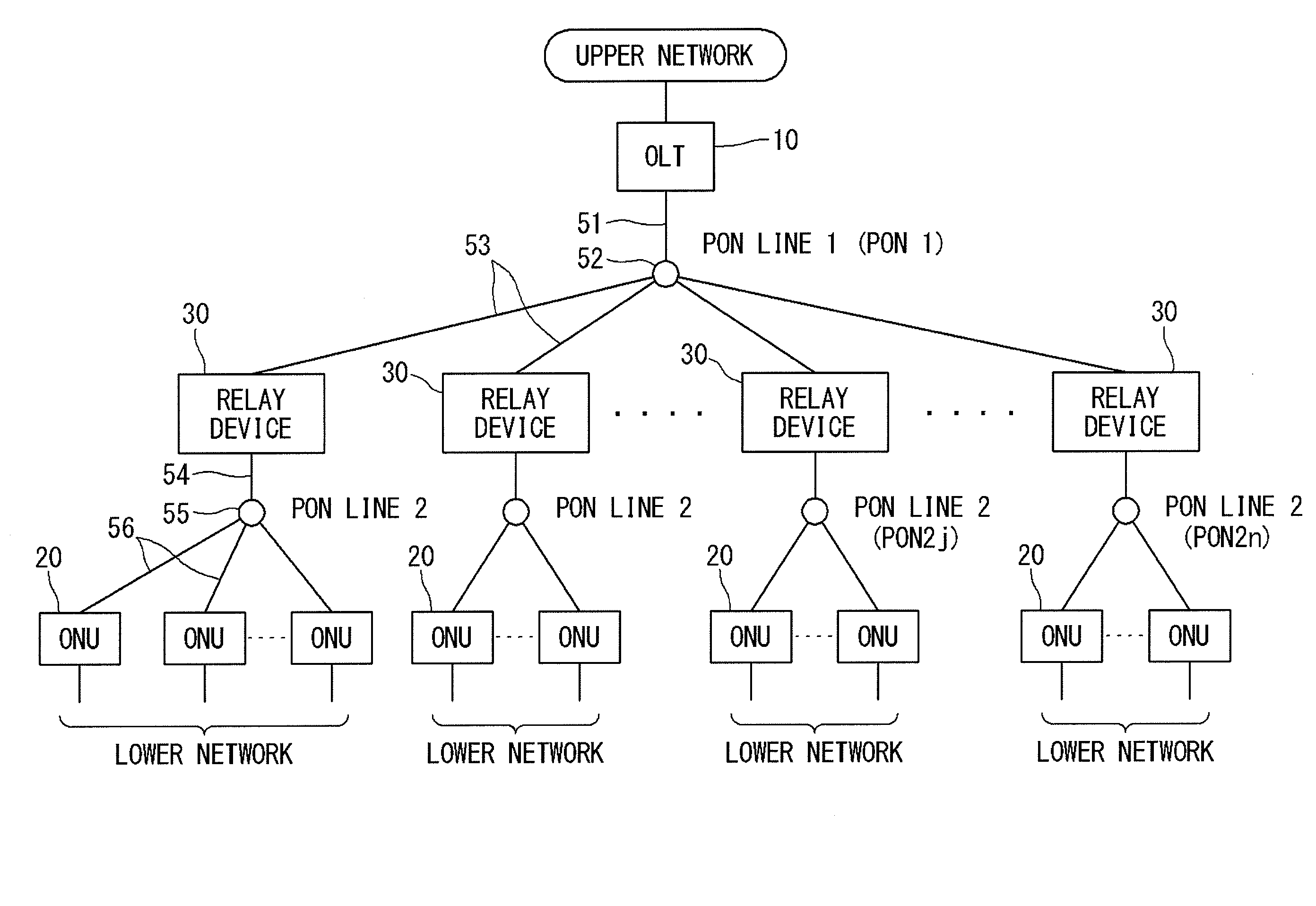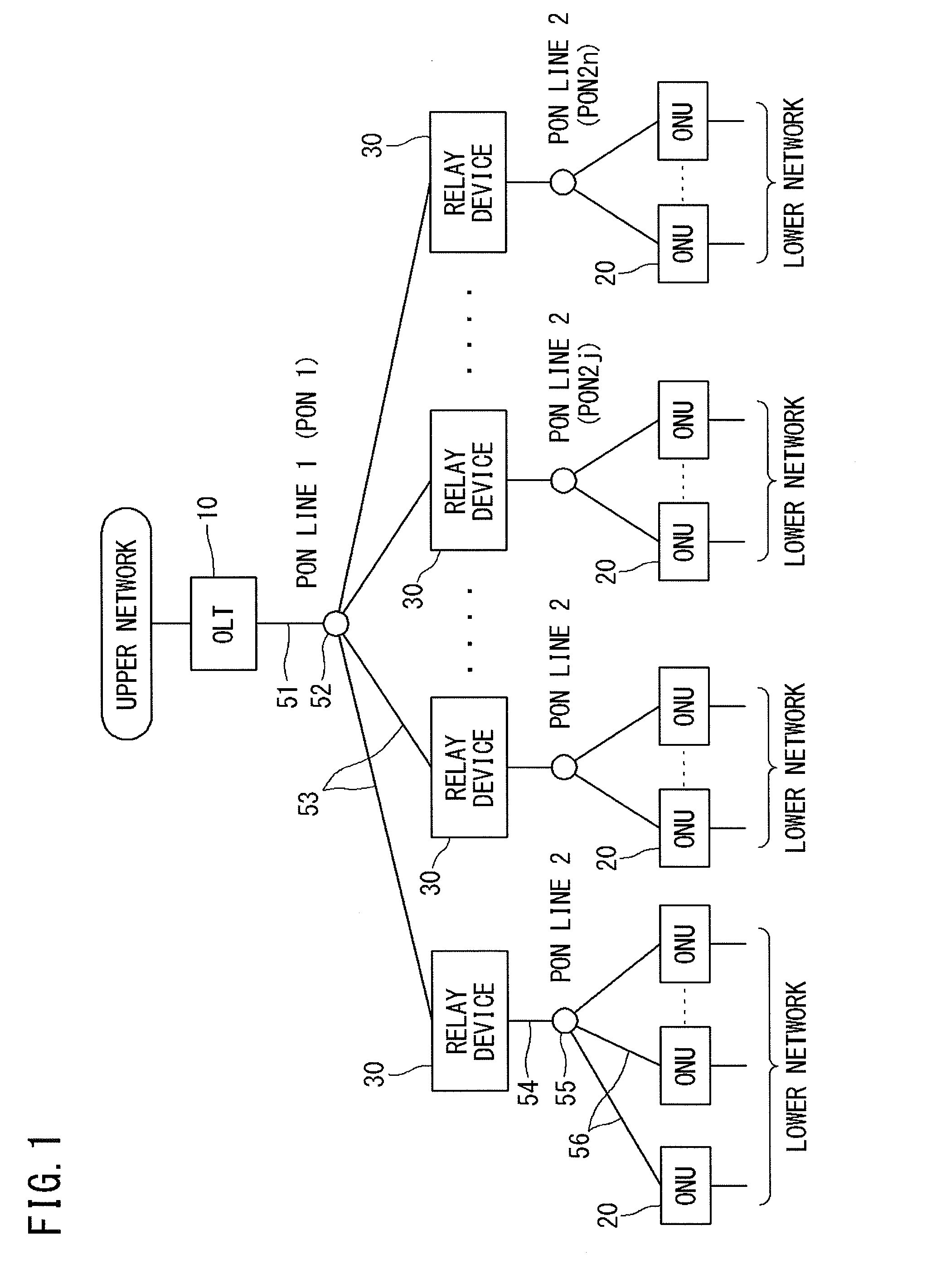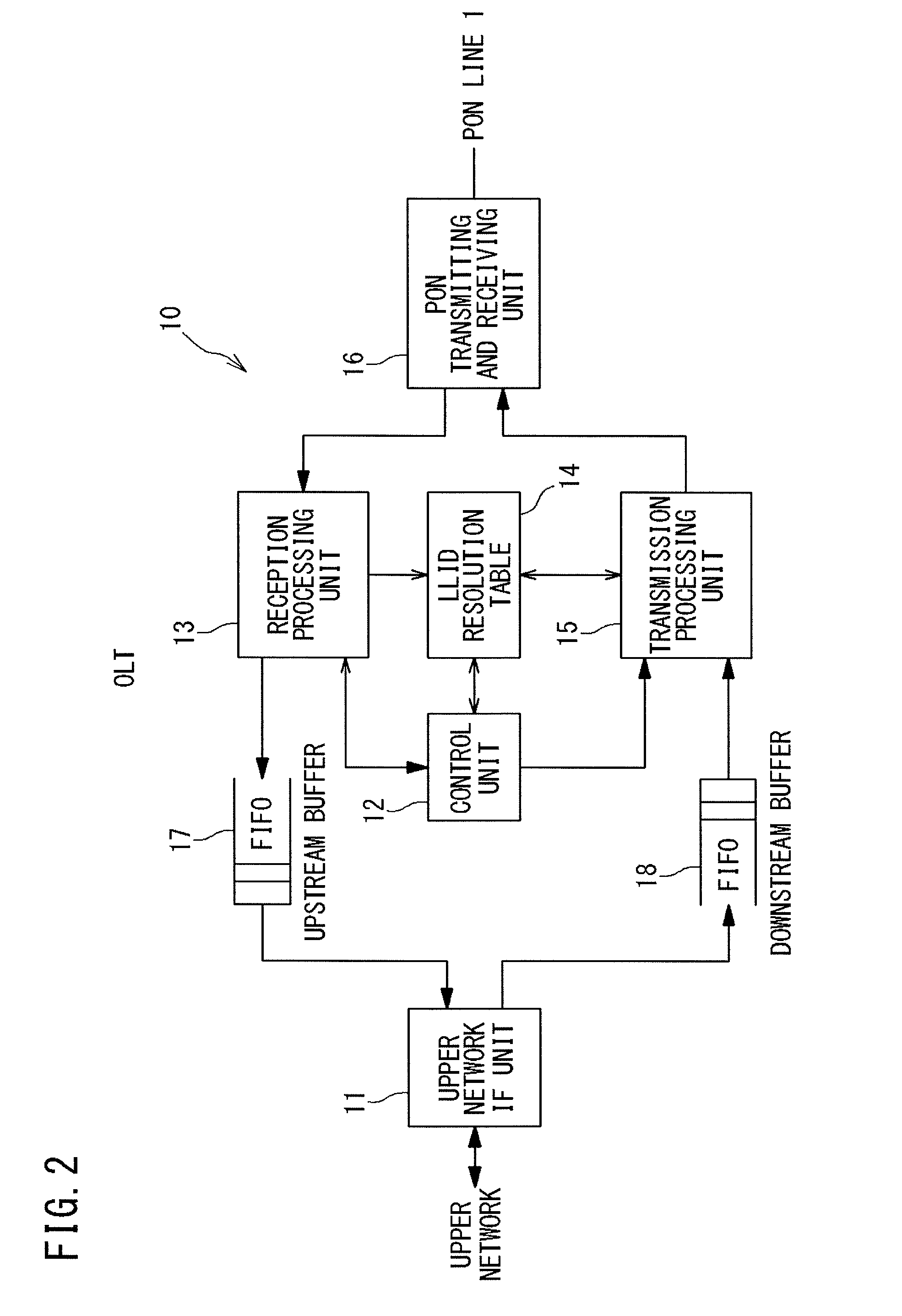Relay device, station side device, and communication system and communication method using relay device
- Summary
- Abstract
- Description
- Claims
- Application Information
AI Technical Summary
Benefits of technology
Problems solved by technology
Method used
Image
Examples
first embodiment
[0248][Device Configuration, Etc., of the First Embodiment]
[0249]The configurations of an optical communication system, an OLT 10, and ONUs 20 according to the first embodiment are the same as those in the case of the first basic mode (see FIGS. 1 to 3).
[0250]The basic components of a relay device 30 are also the same as those of the case of the first basic mode (FIG. 4), but in the first embodiment the correspondence relationship between the logical link of a PON line 1 and the logical links of a PON line 2 is any and thus may be either “one-to-many” or “one-to-one”.
[0251][Configuration and Function of an Upstream Buffer]
[0252]FIG. 13 is an illustrative diagram of a second upstream buffer 40 for user frames which is used in the relay device 30 (the basic configuration is the same as that of FIG. 4) of the first embodiment.
[0253]As shown in FIG. 13, in the relay device 30 of the first embodiment, the second upstream buffer 40 is composed of a ring buffer capable of making a “reserva...
second embodiment
[0294][Device Configuration, Etc., of the Second Embodiment]
[0295]The configurations of an optical communication system, an OLT 10, and ONUs 20 according to the second embodiment are the same as those in the case of the first basic mode (see FIGS. 1 to 3).
[0296]The basic components of a relay device 30 are also the same as those of the case of the first basic mode (FIG. 4), but the second embodiment assumes the case in which there is a “one-to-one” correspondence relationship between the logical link of a PON line 1 and the logical links of a PON line 2.
[0297]In addition, it is assumed that the configuration of a second upstream buffer 40 for user frames which is used in the relay device 30 (the basic configuration is the same as that of FIG. 4) of the second embodiment is the same as that of the first embodiment shown in FIG. 13.
[0298][Sequence of Distributed DBA and Effect Thereof]
[0299]FIG. 16 is a diagram showing a sequence of distributed DBA of the second embodiment.
[0300]As sh...
third embodiment
[0335][Overall Configuration of a System]
[0336]FIG. 17 is a diagram showing a connection mode of a communication system according to the third embodiment.
[0337]As shown in FIG. 17, in the communication system of the third embodiment, an upper-level network is composed of a PON (specifically, a GE-PON) using an optical fiber, and a lower-level network is composed of a CDN (Coaxial Distribution Network) using a coaxial cable (Coax).
[0338]In general, the CDN is composed of a network in which a CLT (Coax Line Terminal) which is a station side device is connected to a plurality of CNUs (Coax Network Units) which are home side devices in a one-to-many manner by split coaxial cables.
[0339]Hence, in the communication system of the third embodiment, in the lower-level network where a relay device 30 behaves as a CLT, a coaxial cable 154 is split into a plurality of branch lines 156 through a CATV splitter 155, and CNUs 120 are connected to the branch lines 156.
[0340]Therefore, an electrical ...
PUM
 Login to View More
Login to View More Abstract
Description
Claims
Application Information
 Login to View More
Login to View More - R&D
- Intellectual Property
- Life Sciences
- Materials
- Tech Scout
- Unparalleled Data Quality
- Higher Quality Content
- 60% Fewer Hallucinations
Browse by: Latest US Patents, China's latest patents, Technical Efficacy Thesaurus, Application Domain, Technology Topic, Popular Technical Reports.
© 2025 PatSnap. All rights reserved.Legal|Privacy policy|Modern Slavery Act Transparency Statement|Sitemap|About US| Contact US: help@patsnap.com



